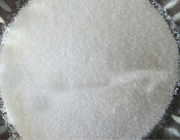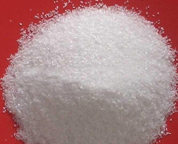
Polyacrylamide is a polymer (-CH2CHCONH2-) formed from acrylamide subunits, it is long-chain polymer (same molecule repeating itself many times) designed to attract either positively charged particles (organic materials, such as carbon or human waste) or negatively charged particles (inert materials, such as sand or clay). The abbreviation of polyacrylamide is PAM, it is a chemical which purchased in dry, emulsion, liquid and tablet form.
There are two types of polyacrylamide: APAM anionic polyacrylamide, CPAM cationic polyacrylamide.
| APAM Aniocic polyacrylamide Introduction: Anionic polymer flocculant is mainly used for the treatment of solid minerals in the neutral suspension. Anionic polyacrylamide is used to improve the removal effect of the suspended solids, COD and phosphate in the urban and industrial wastewater treatment. In the drinking water and wastewater treatment, APAM is used in the surface water clarification. APAM Anionic polyacrylamide adopt the technique of adding alkali in the propenamide and then make them homopolymerization and hydrolysis, after granulation, drying and crushing, anionic PAM appears as a small white powder of granular solids... ... |
 |
|
| CPAM Cationic polyacrylamide Introduction: Cationic polymer flocculant is a water soluble linear polymer, and its molecular weight is between 400-1200million. CPAM also can be dissolved in methanol and ethanol, but can not be dissolved in ketene, esters, hydrocarbons and other organic solvents. Cationic CPF showed electropositive in acidic or alkaline medium, thus it is effective in the treatment of coagulation and sedimentation with the suspended particles in the negatively charged sewage water. Such as the production ..... |
 |